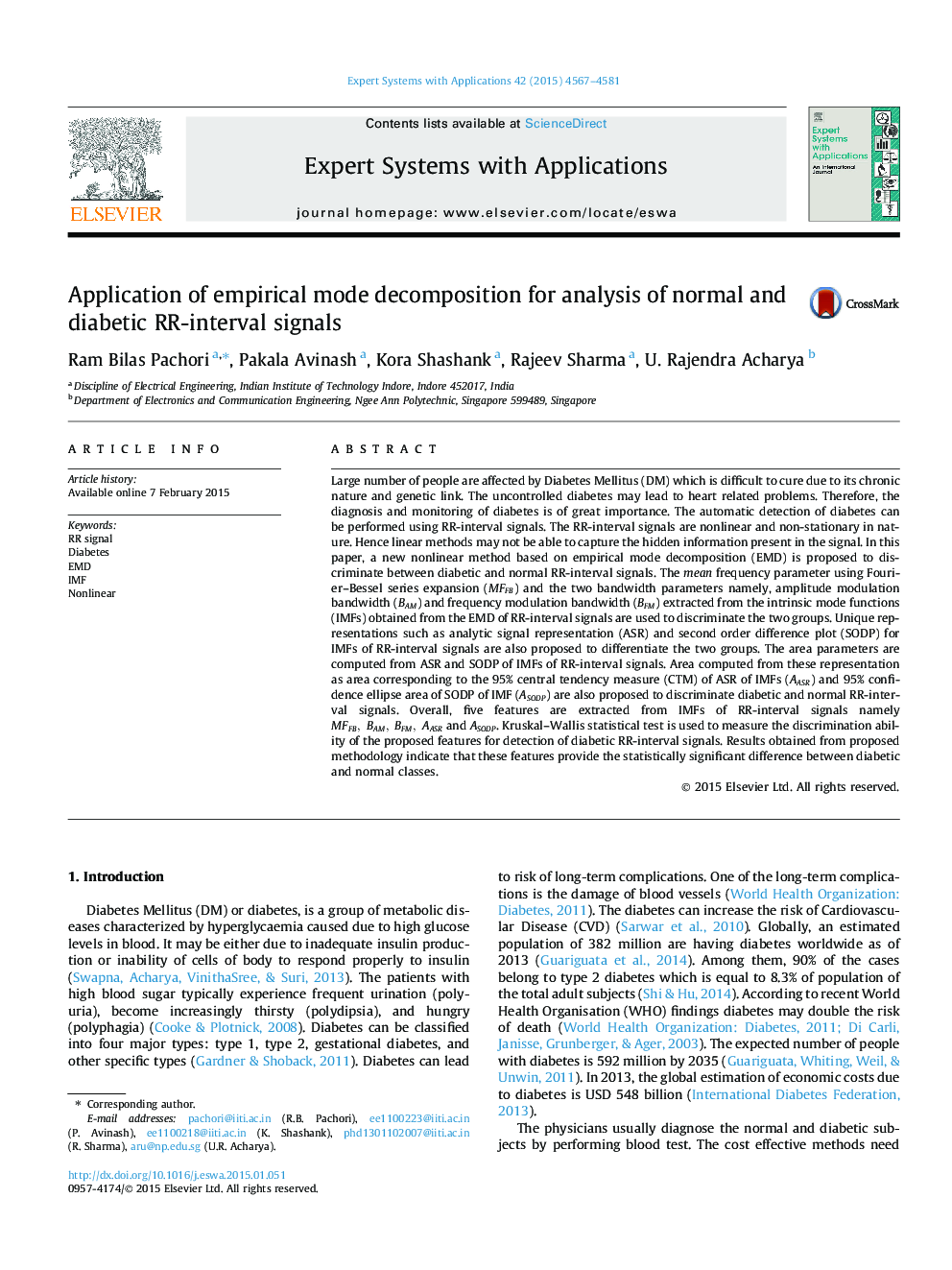| کد مقاله | کد نشریه | سال انتشار | مقاله انگلیسی | نسخه تمام متن |
|---|---|---|---|---|
| 385479 | 660866 | 2015 | 15 صفحه PDF | دانلود رایگان |

• We propose new features for analysis of normal and diabetic RR-interval signals.
• Features are extracted from intrinsic mode functions of RR-interval signals.
• Two unique visual plots are proposed for diagnosis of diabetes.
• Proposed features are suitable for discrimination of normal and diabetic classes.
Large number of people are affected by Diabetes Mellitus (DM) which is difficult to cure due to its chronic nature and genetic link. The uncontrolled diabetes may lead to heart related problems. Therefore, the diagnosis and monitoring of diabetes is of great importance. The automatic detection of diabetes can be performed using RR-interval signals. The RR-interval signals are nonlinear and non-stationary in nature. Hence linear methods may not be able to capture the hidden information present in the signal. In this paper, a new nonlinear method based on empirical mode decomposition (EMD) is proposed to discriminate between diabetic and normal RR-interval signals. The mean frequency parameter using Fourier–Bessel series expansion (MFFBMFFB) and the two bandwidth parameters namely, amplitude modulation bandwidth (BAMBAM) and frequency modulation bandwidth (BFMBFM) extracted from the intrinsic mode functions (IMFs) obtained from the EMD of RR-interval signals are used to discriminate the two groups. Unique representations such as analytic signal representation (ASR) and second order difference plot (SODP) for IMFs of RR-interval signals are also proposed to differentiate the two groups. The area parameters are computed from ASR and SODP of IMFs of RR-interval signals. Area computed from these representation as area corresponding to the 95% central tendency measure (CTM) of ASR of IMFs (AASRAASR) and 95% confidence ellipse area of SODP of IMF (ASODPASODP) are also proposed to discriminate diabetic and normal RR-interval signals. Overall, five features are extracted from IMFs of RR-interval signals namely MFFB,BAM,BFM,AASR and ASODPASODP. Kruskal–Wallis statistical test is used to measure the discrimination ability of the proposed features for detection of diabetic RR-interval signals. Results obtained from proposed methodology indicate that these features provide the statistically significant difference between diabetic and normal classes.
Journal: Expert Systems with Applications - Volume 42, Issue 9, 1 June 2015, Pages 4567–4581